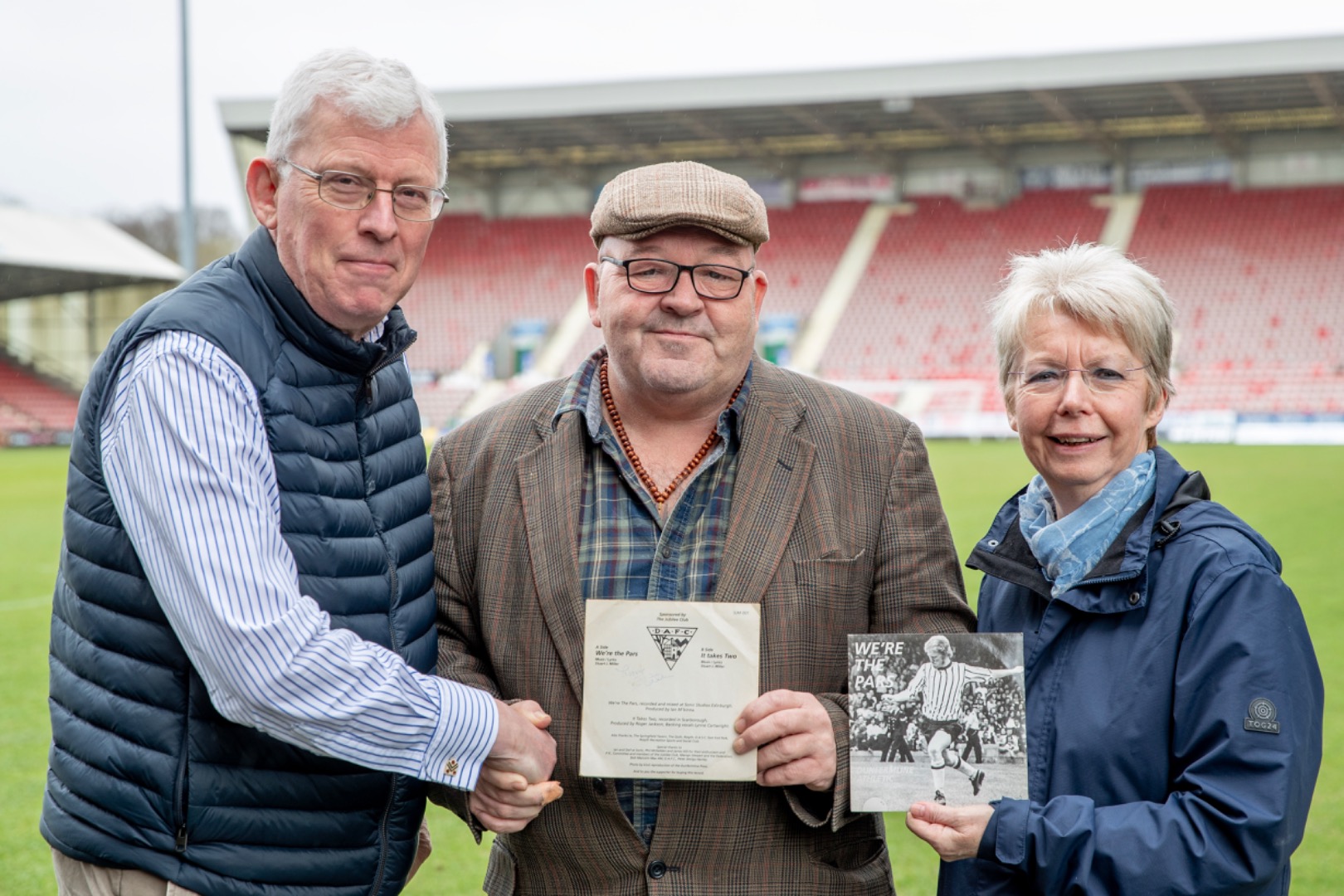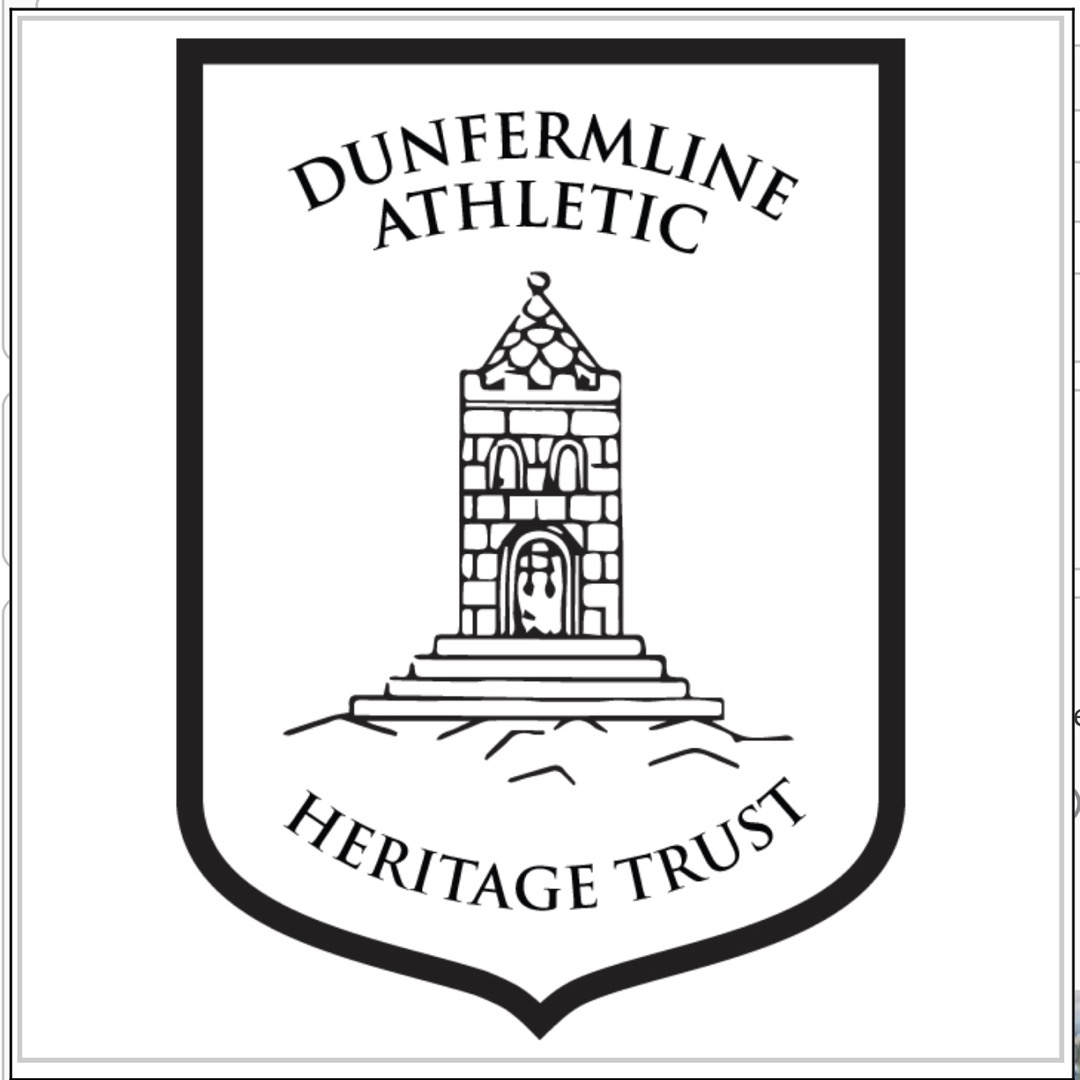Club History | Reflections from 1964
Chris Wishart describes life as a Pars fan from 1964
I started to go to football on a regular basis in 1964, but had attended many games with my father before then. It was the late 50`s when I first went to matches at East End Park, which was right opposite my home on Halbeath Road. East End Park, at that time, still had its low slung stand, a small enclosure behind the town end goal and one opposite the main stand. The terraces were wooden, filled in with ash and, no doubt, benefitted from the fact that the engine sheds with their towering ash and coal plants, could provide plenty of gritty ash and old railway sleepers. The ship breakers yard in Inverkeithing was also a source of wooden beams, etc. The ground`s walls on Halbeath Road had broken glass along the top to deter intruders and, at first, there were not even floodlight pylons. The crash barriers and boundary walls were thick metal tubes, painted red and inserted lengthways into black and white painted concrete posts.
In the far corner, at the Cowdenbeath end, just behind the corner flag, was a low hut, which housed the mowing equipment, whilst at the top of the terracing behind it was the pie stall. How it managed to withstand the wind without being blown over, was something of a miracle. The fare on offer was tea or Oxo, small bottles of fizz, crisps, wagon wheels (which were saucer sized chocolate and mallow biscuits which induced instant toothache) and the aforementioned pie. The pie stall at the town end was adjacent to the stand and served the same culinary delights. There was an art form to eating the pie, provided it was actually hot.
If you bit into it injudiciously, a stream of liquid fat would run down your arm, forming stalactites as it solidified. The trick was to bite in and then hold the pie at an angle to drain, in the hope that the morsel of sawdust and gristle which constituted the filling would not also fall out. For dessert, an ice cream van would also park at the top of the terracing at the Cowdenbeath end.
There was no ban on alcohol in those days and cheap fortified wine (Eldorado, Lanliq or Four Crown) would be swigged from the bottle as was whisky, navy rum or beer. The screw top beer bottle was often used as a receptacle for drink which had passed through the digestive system, to avoid a major expedition to the toilet and, in a big crowd, no guarantee of finding your way back. Ring pull cans had not been invented and the method of opening a beer can was to make two perforations on the top with the pointed end of a bottle opener. This made them unsuitable as receptacles as they tended to overflow and also cause injury to one`s manhood. The toilets in the ground were behind the enclosure and were basically the back wall of the enclosure which you simply peed against, providing an unsightly exhibition if there happened to be a train to or from Stirling passing on the line which used to run behind the ground, through the Upper Station.

In those days, nearly every male smoked and there would always be a cloud of smoke or steam over the ground, what with the trains, the engine sheds (just off Athol Place), the smokers and those relieving themselves. Health and Safety had not been invented. Quite often at a half time at a game, a brass band would parade around the track, followed by four guys holding out a stretched out sheet to collect for a worthy cause. Donations, in the form of coins, would be thrown from the terracing and usually landed in the sheet. Crash helmets were not worn but, by some miracle, blindings and concussions were few. Nowadays a ground can be closed if a coin is thrown but in those days it was common practice and is the origin of the term (To put a sheet round for someone) often heard in offices. On the track behind the goals, a collection of blue invalid cars would assemble before the game, entering down the slope at the town end and coming round the track to congregate in an arc behind the goal at the Cowdenbeath end. If they escaped injury from wayward shots from the players or from flying charitable donations, these guys would start to head back home about ten minutes before the end and would be going along the track as the game went on. They would rush at the slope at the town end and usually stall about half way up and had to be pushed the rest of the way.
The match programme was a simple affair which, apart from a few adverts, comprised a few notes from the manager, the expected line-ups and the half time scoreboard. Smart phones and even mobiles were long from being invented, football grounds were not equipped with teleprinters and transistor radios were new and uncommon. Half time scores were eagerly awaited and were provided by individuals with bags of metallic numbers which were hung on nails on the half time scoreboard which corresponded with the grid in the programme. So A might be 1-0 which would mean that, for instance Celtic might be leading Third Lanark 1-0. B might be 2-1 and the grid would show which teams these were. Soon after half time, newspaper vendors would appear shouting Half Time Results and selling afternoon editions of evening papers with a few half time scores in the Stop Press column.
Another factor in those days was that the normal working week included Saturday morning and most of the fans and some of the players worked in the morning of a match. The Pars had many miners amongst their fan base and it was not uncommon to see miners, still with blackened faces and looking like extras from The Black And White Minstrel Show. The pit helmets came in handy though if there was a collection.
Football was simple then:- two points for a win, one for a draw and an eighteen team league - so plenty of variety. As a youngster in those days, I found it idyllic. Saturday morning was a quick breakfast, then up the park to play football. The jackets for goalposts variety but that did not prevent us from kitting ourselves out in black and white striped shirts and kidding ourselves on. (There were no replica strips in those days). In later years proper games replaced the kickabouts but we were always back for the start of Grandstand and a bolted lunch.
My friends and I all lived on Halbeath Road so if it was a home game we would play headers or Subutteo until it was time to go over. If it was an away game we would already have booked our ticket from the hut behind the Snack Bar at the Upper Stance for one of the special buses which took you from Carnegie Street to whichever away ground was the venue for the day. We were always back for tea and would meet up again about quarter to seven, then it was off up town to pick up an evening sports paper. There was plenty of choice - The Evening News (Edinburgh) and the Evening Times (Glasgow) were both pink, The Evening Citizen (also Glasgow) was green and my favourite The Sporting Post (Dundee) was white.
The Sporting Post had an interesting style for their match reports in that they were written in present tense. Suitably equipped we would head for either The Central Restaurant (Catagnani`s) or The Brig for a plate of chips and mushy peas and a mug of bovril which we would consume as we devoured the results and reports of the day`s football. Then it was back home through the Public Park to try out a few moves before calling at Bellini`s (which used to be opposite Park Place) for a packet of Kings Oddfellows and home for the choice of Sportscene or Scotsport, whichever had The Pars on.
Later, of course, things became more complicated with The Appin Tavern (The Canmore), Park Tavern, East Port Bar and later still the Belleville and the Kinema Ballroom replacing the chippys and male friends being replaced by a strange species who did not understand football but, nevertheless, provided an interest of a different kind. Oh for the good old days!
Related Stories
views: 123



